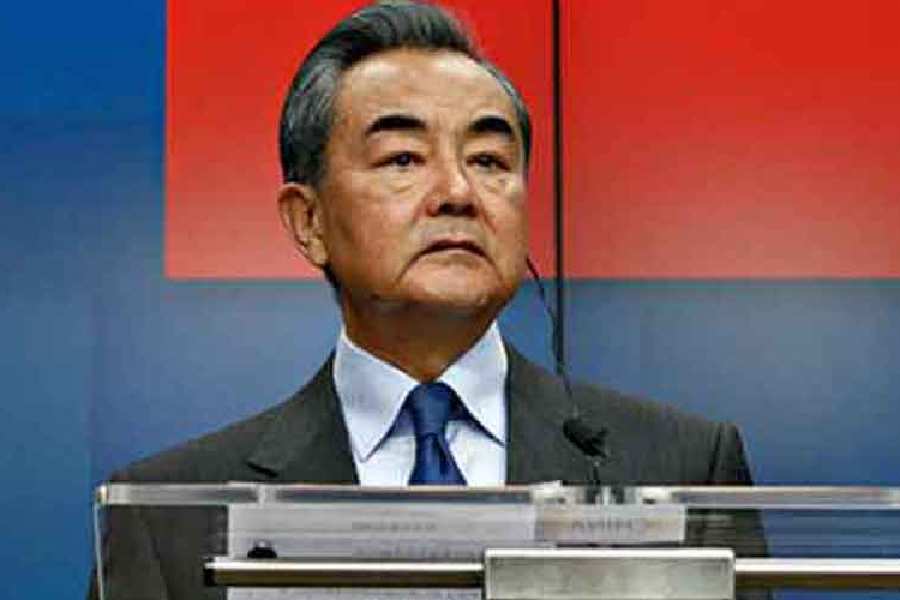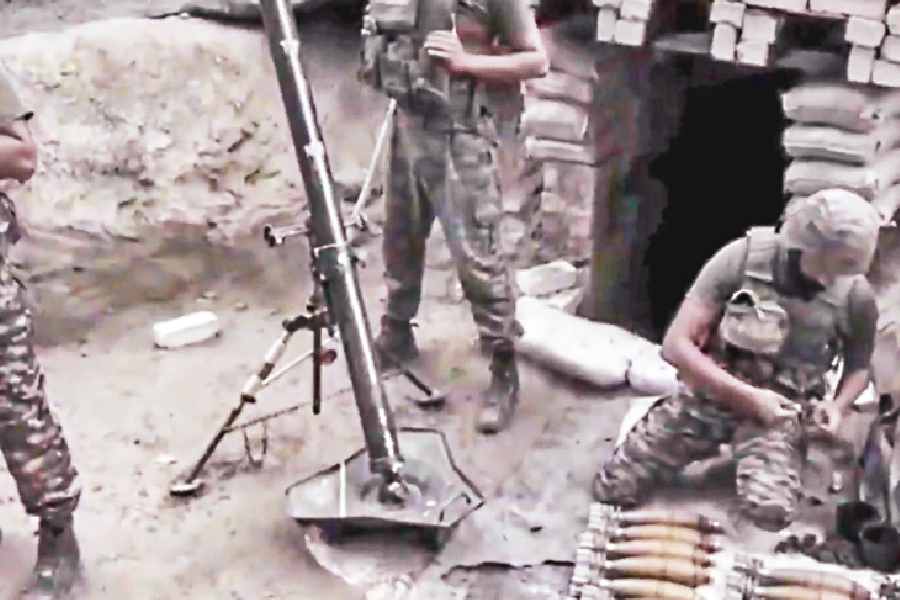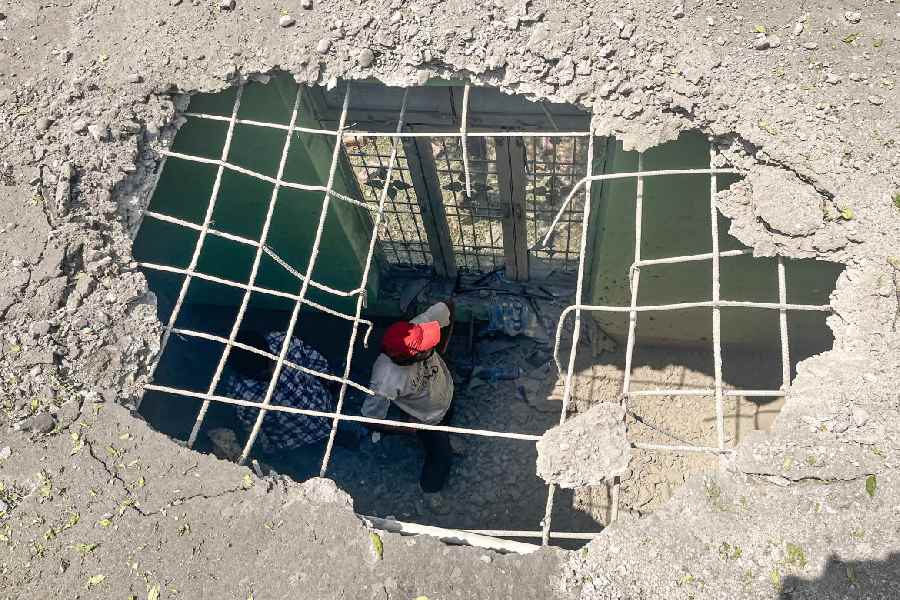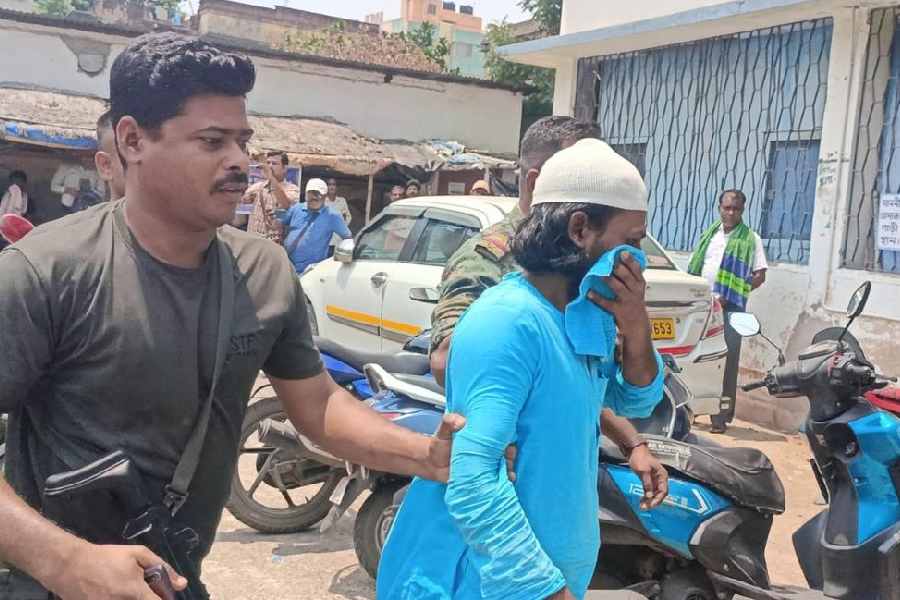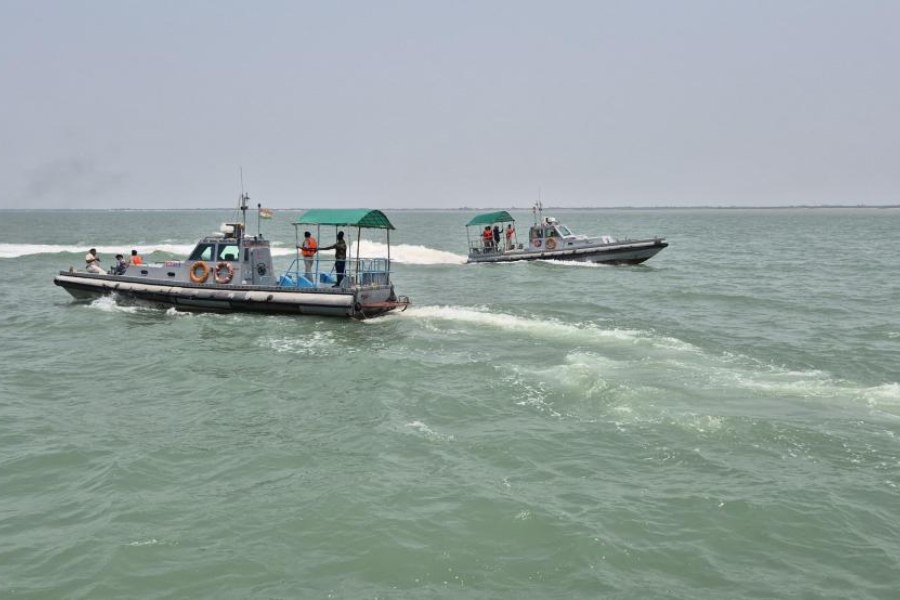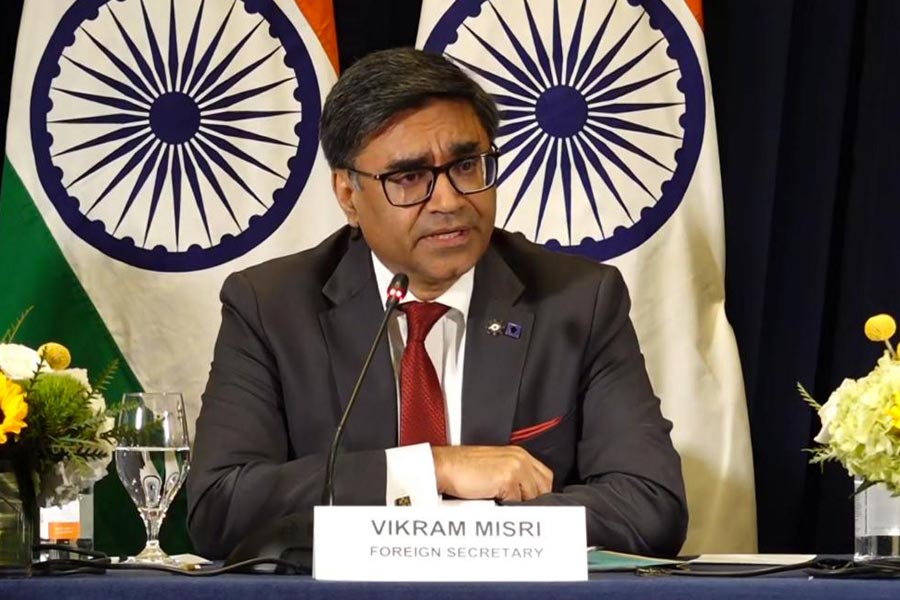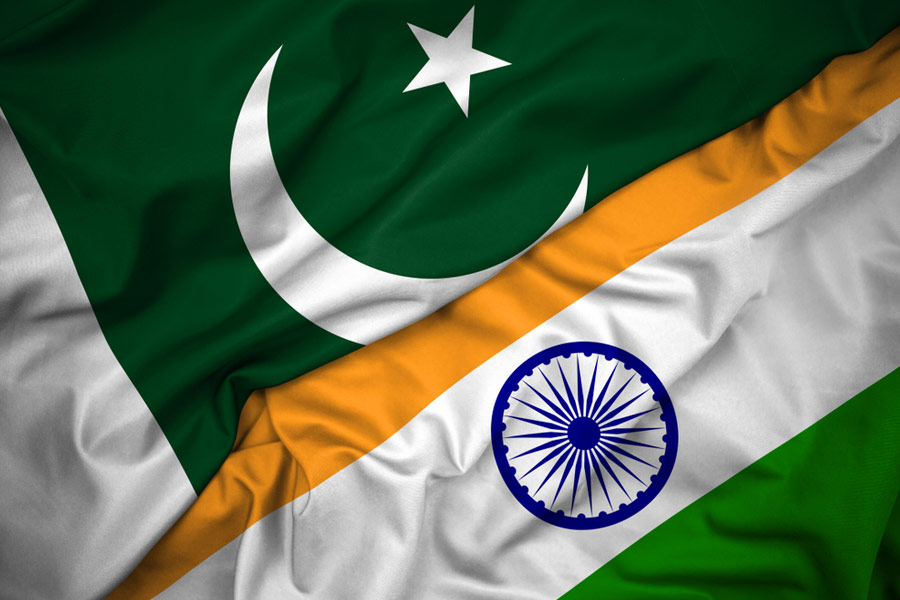 |
| A jatra actor prepares for his role. A Telegraph picture |
Songs have always been the lifeline of jatras, the folk theatre form that once enjoyed a monopoly in the suburbs, industrial areas and villages. Jatras are still predominantly musical but instead of original musical scores and lyrics, they are heavily dependant on the big screen for performers as well as actors, for that is where the big money is. In spite of these changes, jatra companies are still based in Chitpur.
Prabhat Kumar Das of Harikhali at Mahishadal in Midnapore East, whose passion is jatra and who edits the Bohurupee and Sahitya Parishad journals, is tracing the history of jatra in the 20th century to be published in book form. The research project is being funded by the India Foundation For the Arts. Das’s interest in jatra stems from two biographical facts: his father was the famous jatra actor Mukunda Das (professionally known as Ghosh) and his father-in-law was the equally well-known female impersonator Kshitish (Rani) Biswas, who in later life became a competent jatra manager.
Das says earlier jatra was known as geetabhinay or acting through singing. It was Motilal Roy of Nabadwip Banga Gitabhinay, a contemporary of Girish Chandra Ghosh, who modernised jatra by putting extra stress on dialogue. Earlier, as in musicals, the exchanges between characters were also sung. Before Motilal Roy, Madan Master, who is said to have been a teacher in Chandernagore, had introduced some change in the presentation of songs. But it was under Motilal’s influence that jatra came closer to theatre.
The year 1872 witnessed the birth of professional Bengali theatre, and the first performance was held in the house of Madhusudan Sanyal, now known as Ghariwala Mallikbari in Pathuriaghat of Chitpur. Jatra was also evolving around this time. The role of “bibek” or conscience was first introduced in Ahibhushan Bhattacharya’s pala (scripts) Surat Uddhar. Haripada Chattopadhyaya’s Padmini pala was the first jatra based on history. Earlier, all palas were inspired by tales from Puranas, or holy scriptures.
Around 1910, Mathuranath Saha tried to bridge the gap with theatre by recruiting well-known playwrights and directors of plays. The acting style, music and costumes — everything became modern, and jatra was now developing an independent identity much to the chagrin of jatra lovers.
Around this time, jatra was undergoing a sea change and it moved further away from folk theatre although the form gained wider popularity. Other jatra companies also began to recruit from stage. Sisir Kumar Bhaduri joined the professional stage but he was one of the strongest critics of theatrical jatras. Prabhat Kumar Das says Bhaduri was of the opinion that if jatra had a greater influence on the local proscenium theatre instead of theatre from foreign climes, there would have been greater scope for development. After Sarodotsab, Rabindranath’s plays were markedly influenced by jatras. “Chitrapat noy chittapat” (Not a painted image. Mental image), the poet used to say, as sets were never used in jatras.
Prabhat Basu of Sisir Bhaduri’s group introduced a modern mode of acting in jatra. Jatra actors project a larger-than-life image as they are surrounded by viewers, and they have to throw their voices to be heard from all sides. Now, instead of only being “heard”, jatras were now meant to be “seen” as well, comments Das. The two Phanibhusan brothers, both actors, and Bholanath Roy Kabyashastri, a jatra scriptwriter who died young, became so popular that even theatre groups began to lure them.
In the early 1930s, Brajendra Kumar Dey, who was a masters in economics, opted to teach in a school. On the advice of Jogesh Chandra Choudhury, who wrote plays for Sisir Kumar Bhaduri and also acted in them, Brajendra began to write palas. Brajendra filled the vacuum formed by the death of the famous scriptwriter Bholanath Roy Kabyashastri and held sway over jatra till the 1970s.
Around this time, a great actor named Panchu Sen appeared on the scene. This was when Surya Kumar Datta of Natya Company had come to Calcutta from East Bengal. This trio modernised jatra. Brajendra exploited the potential of jatra as a medium of the education of the masses and to convey the message of Hindu-Muslim amity. His scripts were based on fictionalised versions of tales from history and the scriptures. Of his adaptations of the Mymensinh Geetika, Sonai Dighi is an evergreen. Brajendra’s birth centenary was celebrated in 2007. This pioneer introduced scripts based on social themes, a new brand of humour and music. Earlier, some of Mukundadas’s scripts were also based on social themes but these were forgotten.
After the Partition, Chitpur jatras were badly hit as the zamindari system was abolished and East Bengal was out of bounds. But the jatra festival at Sovabazar Rajbari in 1961 revived the popularity of the form, which till then was considered declasse. Professional theatre also tried to give jatra a boost. Rashbehari Sarkar, along with Biswarupa Natya Unnayan Parshad, organised a jatra festival at Rabindra Kanan. Tapas Sen was called upon to experiment with lighting, and microphones were introduced on a trial basis. Later in the 1960s, Swapan Kumar used microphones for the first time in Michael Madhusudan. Spotlights made their entry in Purnendu Sekhar Bandopadhyaya’s Swami Vivekananda. Jatra went global in Amar Ghosh’s Hitler with Santigopal in the title role. Sound effects of battles were in jatra for the first time. Jatras took out full-page adverts in newspapers. Crowds swelled and became phenomenal.
This was also the heyday of female impersonators. These men added Rani to their names and underwent gender change. Upen Rani, Nitai Rani, Haripada Rani, Chhabi Rani, Satadal and Banaphool were the reigning queens. Although Chapal Rani in her Sitala role is still famous, this tradition came to an end in the 1970s. In the mid-1950s Jyotsna Datta had joined Satyambar Opera as a sakhi or a chorine and later became a top heroine along with Bina Dasgupta.
Back in the 1968s, Utpal Dutt joined jatra. Some of his famous productions were Rifle, Sanyasir Tarabari and Dilli Chalo. He may have favoured tradition but the stress was on group acting.
Now few of the great jatra performers and directors are around, rues Das, and with big budgets, the form is closer to cinema. Since sets were not used in jatras viewers had the freedom to use their imagination. Now, with the introduction of spectacles jatras have acquired a new dimension. Professional theatre is gone from Hatibagan forever. Jatra has changed beyond recognition.


